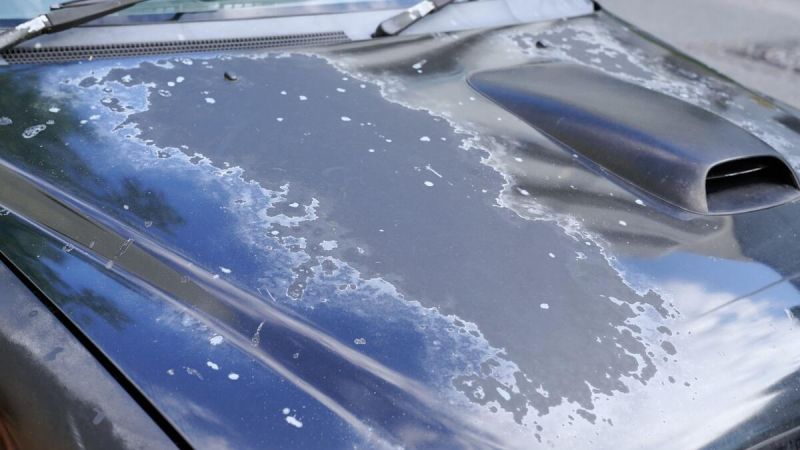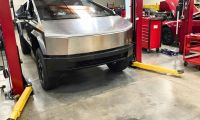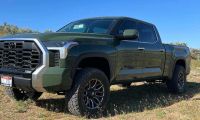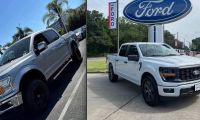It Happened To My Car
One of our family cars was a brand-new 2008 Hyundai Santa Fe with either a “Quartz White Pearl” or “Blizzard White Pearl” body color that struck me as particularly appealing due to it had a depth to it that made it stand out as something more, something better than just another white car. It was like looking into cosmic light.
Like all of our cars, I babied this one ensuring that it was handwashed and waxed monthly to provide the protection it needs to preserve the paint as part of my car maintenance routine. I avoid car washes because it’s like using a public laundry and restroom in one space.
A few years and 70,000 miles later I moved and passed the car onto a family member. Imagine my horror when returning 3 years afterward I saw the car’s paint was peeling like an old sunburn. “All that work” was the first thought in my mind as I wondered how this could have happened. I initially surmised that it had not been washed and waxed in my absence. But as it turned out I was wrong. It was the beginning of a growing list of complaints about car models prone to peeling paint problems.
What Car Models Have Peeling Paint Problems?
That was the topic of a recent Consumer Reports newsletter that identifies car models known for frequent problems with bubbles, peeling, and flaking of their OEM body paint.
Related article: DIY Car Painting with a Cheap Wedding Tent Solution
Some sources report that it might have to do with a switch to a "self-healing" style paint used by Hyundai and other manufacturers that caused the paint to peel off prematurely in some models.
Others point to that some paint jobs are more prone to problems with even the slightest gravel ding chipping through the protective clear coat.
To help consumers identify potential paint problems cars when used car shopping, CR analysts put together a list of those models that are the most commonly affected by or prone to peeling paint problems.
“The 10 highlighted models are presented below in rank order, starting with the one with the greatest paint-related problem rate among CR members…We show the model year with the greatest problems (and when applicable, a range of years affected by this problem). Plus, when available, we share owner comments submitted to CR,” states the newsletter.
Cars Most Likely to Have Paint Problems
1. 2016 Chevrolet Suburban/GMC Yukon XL
Model years affected: 2015-2016
One owner wrote: “After about 5 years, paint faded across the top of the vehicle.”
Technical service bulletin 1, 2 (PDF)
2. 2015 Hyundai Genesis
One owner wrote: “The paint on both bumpers has peeled off in large areas, and where it hasn’t peeled, it has faded to a yellow-green tint. The car is a pearl (Casablanca White) clearcoat.”
Technical service bulletin (PDF)
3. 2016 Ford Explorer
Model years affected: 2014-2020
One owner wrote: “Blistering paint along the front of the hood.”
Technical service bulletin (PDF)
4. 2022 Toyota Tundra
Model years affected: 2022-2023
One owner wrote: “Paint cracking at the seam of lower part of the bed on the driver’s side.”
Technical service bulletin (PDF)
5. 2022 Tesla Model X
Model years affected: 2018, 2022
6. 2017 Hyundai Sonata/Sonata Hybrid
Model years affected: 2014-2018
One owner wrote: “Known defect specific to white Hyundais within a specific year range. Paint on the roof is peeling in large pieces down to the metal of the car. Our local dealer is working with us and Hyundai to repair the problem.”
Technical service bulletin (PDF)
7. 2014 Ford Taurus
8. 2020 Ford Mustang
Model years affected: 2014, 2016, 2018, 2020
One owner wrote: “The edge of the hood had ‘bubbling’ on the edges.”
Technical service bulletin (PDF)
9. 2016 Hyundai Elantra
Model years affected: 2014-2019
One owner wrote: “Both bumper covers, all door handles, and the shark fin antenna have paint peeling and look terrible.”
Technical service bulletin (PDF)
10. 2015 Mercedes-Benz GLK
Model years affected: 2014-2015
One owner wrote: “Protective coating on handles and fuel tank cover is coming off.”
Technical service bulletin (PDF)
How Can I Protect My Car’s Paint?
There is no 100% guarantee that with all of the care possible (and reasonable) that your beloved car’s paint will not peel or flake away like a French croissant.
However, that does not mean you should not try to keep it as pristine as possible until the day it does fade or begins to decay and rust away.
Protecting your car's paint from peeling, chipping, and flaking requires proactive maintenance and care. Here are some recommended tips to help you keep your car's paint in pretty good if not near factory new appearance:
- Regular Washing: Wash your car regularly to remove dirt, grime, and other contaminants that can damage the paint. Use a pH-balanced car wash soap and a soft microfiber wash mitt to prevent scratching.
- Waxing: Apply a coat of wax to your car's paint regularly to provide a protective barrier against environmental elements such as UV rays, bird droppings, tree sap, and road salt. Waxing also helps to maintain the shine and luster of the paint.
- Paint Protection Film: Consider applying a paint protection film (PPF) to vulnerable areas of your car, such as the front bumper, hood, and side mirrors. PPF acts as a sacrificial layer, absorbing the impact of small stones, road debris, and insects, and preventing them from damaging the paint.
- Avoid Parking in Direct Sunlight: Prolonged exposure to sunlight can cause the paint to fade and deteriorate over time. Whenever possible, park your car in a shaded area or use a car cover to protect it from UV rays.
- Keep a Safe Distance: Maintain a safe distance from other vehicles while driving to minimize the risk of stone chips and debris from hitting your car's paint.
- Regular Maintenance: Keep up with regular maintenance tasks such as oil changes and inspections to ensure that your car remains in good overall condition, which can indirectly help preserve the paint.
- Undercoating: Consider applying an undercoating or rustproofing treatment to protect the underside of your car from corrosion, which can eventually lead to paint damage.
What Is The Worst Thing You Can Do to Your Car’s Finish?
1. Using Harsh Cleaning Chemicals: Using harsh chemicals or abrasive cleaners on your car's paint will strip away the protective wax and clear coat, leading to paint damage. Use products specifically designed for automotive use.
2. Not Repairing Chips and Scratches Promptly: By not addressing chips, scratches, or dings in the paint as soon as possible sets up your car’s body to develop paint peeling and/or rusting. You can use touch-up paint or seek professional assistance for more extensive repairs.
Related article: Rattle Can Repair Scam Warning for Used Car Shoppers
How Can I Repair Small Nicks in My Car’s Paint?
Repairing small nicks in your car’s paint is a DIY task that can result in satisfactory results. Touch-up paints sold in auto part stores come in a wide range of model colors; however, not every color is provided. A solution to this is to go to your car dealership with your car’s VIN and he or she should be able to help you identify and obtain the exact tint you need.
A proper repair entails a multi-step process that requires time and patience.
For example, in “Custom Car Painting on a Budget” the authors describe the process as including:
1. Cleaning the damaged area with wax and grease remover.
2. Masking off the surrounding area to prevent overspray or smearing paint outside the damaged spot.
3. Apply 800-grit sandpaper (or finer) to the area where the paint will be applied.
4. Apply a light coat of touch-up paint to the area and allow it to dry.
5. Sand lightly over the touched-up spot to smooth.
6. Apply a second coat of touch-up paint and allow it to dry.
7. Repeat steps 4-6 until the damage has been repaired.
8. Add 1-2 coats of clear coat to protect the paint following the clear coat instructions.
For a demonstration of the best way to fix paint chipping on your car using a kit, here is an informative video from the Cars with Sonduren YouTube channel.
Please Note: Be sure to read the comments from the video for additional help from others who have tried this kit and the techniques they used.
Has your car ever had a paint problem? How did you handle it? Please, click the red link below to write your comment and to join the discussion.
THE BEST WAY TO FIX PAINT CHIPS ON YOUR CAR!
For additional articles on how maintaining your car’s appearance, here are four useful ones for your consideration:
- Hybrid Ceramic Wax Review by a Toyota Mechanic
- Best Headlight Restoration Kit in 2024
- Cleaning the Inside of Your Car With a Leaf Blower Is a Bad Idea
- How To Safely Remove Bird Poop From Your Car and Prevent Damage
Timothy Boyer is an automotive reporter based in Cincinnati. Experienced with early car restorations, he regularly restores older vehicles with engine modifications for improved performance. Follow Tim on Twitter at @TimBoyerWrites and Facebook for daily news and topics related to new and used cars and trucks.
COMING UP NEXT: The New Ford DIY Repair Manual Every Ford Owner Should Have
Image source: Deposit Photos












